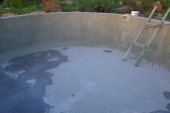posted 9 years ago
I am extremely happy with the amount of water I have here in NC. My property happens to have two ponds, one large, and one smaller, usually a breeding ground for frogs, lovely rainfall, and three springs, that I know of, one of which was broadened into a third pond. All of this is great, except, we have therapy horses on our property. 22 of them. Their paddocks take up the majority of our land. Mud is so bad for their feet. With thrush and cracking and a whole host of things that go wrong with excess amounts of mud, we're having a problem.
Our property never dries out! It is wet all the time. There is constant mud, pretty much everywhere, except for maybe two months out of the year. It's on our pathways, in our paddocks, in our barns, everywhere. Does anyone have tips for drying it out in a helpful way? Maybe some trees nontoxic to horses/cows/goats, but that need a lot of water and will soak it up? Or, maybe contact information for someone in NC who will cap a spring? Or possibly a way to redirect the water and use it for growing foods? Any advice would be helpful!








